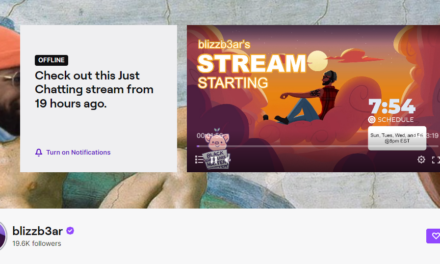AN ‘OUTSIDE-IN’ APPROACH
That outside-in approach is how Tahzoo views omnichannel marketing, says Misia Tramp, EVP of insights and innovations for Tahzoo, a digital customer experience firm. The concept, she says, is really about “understanding how to eliminate effort from the customer experience.”
“That may sound very obvious, but I think it often gets missed,” Tramp says. There is a tendency to consider the many channels available today to connect with consumers as simply more options to be used. That’s more of a multichannel approach. Omnichannel, she says, involves “using data to understand where effort exists in the customer experience and how to remove-rather than add-effort.”
At the end of the day, Scott Houchin suggests that it really doesn’t matter what you call it, as long as your efforts serve to “create a fantastic customer experience.” Houchin is managing principal of eClerx, a knowledge process outsourcing company. It’s an organization of about 8,000 people, he says, and his time is spent in the digital practice working with CMOs and heads of marketing to help them determine how to spend their marketing dollars most effectively to connect with customers.
The idea is nothing new, he admits. “It’s really attaching a definition or a headline to something that world-class brands have been doing for some time.” But, he adds, not all have done this well. The emergence of the digital marketplace has complicated the process, with the challenge becoming one of ensuring a seamless experience across all environments.
OMNICHANNEL AND YOUR MARKETING STRATEGY
At the outset, marketers must have a thorough and accurate understanding of their customers, says Houchin. “It’s really trying to bring that integrated view of what a customer experience is with that particular company’s brand-all the way from how do we speak to them to get them interested in the product or service through how do we bring them to buy something and what was their delivery experience and post-purchase experience. That’s first and foremost.” But then the real work begins.
Importantly, effective omnichannel marketing requires not just the efforts of those in the traditional marketing silo within an organization. In fact, because of the scope of what true omnichannel marketing can deliver, it requires a concerted and coordinated effort across multiple functions. Because coordinating multiple communication tactics and messages can be complex, this is where the real difficulty arises for those truly committed to delivering an omnichannel experience.
All organizations have an opportunity to consider an omnichannel approach to their marketing efforts. From a nonprofit, fundraising point of view, Holmes says, “It’s going to take a lot of bridging of silos internally within organizations to ensure that communications are consistent from social media, to PR, to your policy team, to your fundraising teams.”
Silos are breaking down externally as well, she notes. “We expect nonprofits to give us as good of an experience as we receive from our name brand communication partners, whether it’s Amazon, or our banks, or Netflix, or whatever. We expect them to be just as digitally savvy and to know me-the donor-as a person just as much as Macy’s does when it follows me around the internet.”
Gerscovich agrees that companies will need to break down silos to compete effectively in an omnichannel environment. The steps in the process, he says, are as follows:
- Collecting data from online and offline sources to identify the myriad touchpoints that exist
- Breaking down the silos that hinder the integration of all of that data to “really see the customer journey”
- Establishing patterns of behavior at a granular data. In fact, he says that the process will be more about “small pieces of data than Big Data.”
- Identifying what you will do, as a brand, to deliver a message that’s relevant at the right time, in the right place, on the right device-as well as through any other encounters the consumer may have with your organization whether in brick-and-mortar environments or over the phone
Ultimately, people may represent the greatest opportunities-and greatest barriers-to creating a true omnichannel experience, notes Houchin. “I don’t think you can overinvest on the people front,” he says. The many points of customer interaction are where failure points most often exist. Addressing these issues is, he notes, more low-tech than technical-something that companies often don’t think about enough.
WHAT LIES AHEAD
“To become truly channel agnostic, a company must invest in the technology, infrastructure, organizational, and marketing changes that allow for fluid movement between channels, such as inventory management, fulfillment, customer relationship databases, staff performance incentives, and messaging,” says Schwartz. “This is hard work, but companies are having success at tackling specific parts of this. This is definitely an approach companies evolve into-not a switch they can flip.” It’s a process, not an event.
“The breaking down of data silos has begun, and I think we’re going to see a lot more of that,” says Gerscovich. Specifically, he says, mobile is likely to be “less of an island.” Mobile apps, he notes, have not been taking intelligence and data from consumer touchpoints to alter the customer experience-yet. That, he says, will soon change. “I think it’s an exciting time for marketers-the challenges have increased, but our capability to deliver on this notion of truly having a one-to-one conversation is actually a reality.”
This new way of thinking is going to involve a combination of organizational shifts and technological insights about consumer buying behaviors with an eye toward a seamless experience across all channels that removes barriers and provides value. “In 2015 and beyond, retailers and publishers alike need to stay consistent in not only just maintaining a presence but delighting and engaging their browsers and buyers on every channel their audience interacts with to stay top of mind,” says Nii Ahene, COO and co-founder of CPC Strategy, a retail-focused search agency based in San Diego.
Importantly, he notes, a one-size-fits-all approach doesn’t work. “Every company has finite resources, and it’s key to understand your audience’s path to engagement, or purchase, to inform where your investments should be,” says Ahene. “Apple doesn’t maintain an active presence on either Instagram or Twitter-not because they are not cool, but because they understand both what makes Apple products shine and how to position them to drive their consumer to purchase. To be successful, given the multitude of product and content distribution channels, a concerted effort has to be made by publishers and retailers alike to understand not only their target market but the mediums where their product can best be differentiated to truly compel their audience to engagement.”
Whether it’s called “multichannel,” “omnichannel,” or some other form of “channel,” as with any other form of marketing, it’s really all about understanding and meeting consumer needs.






